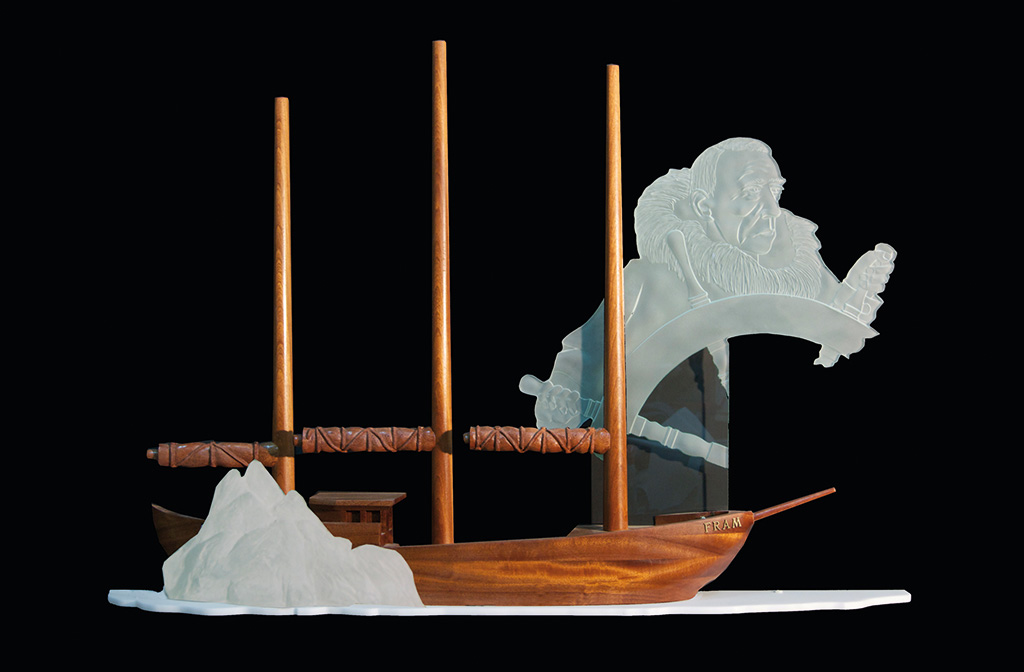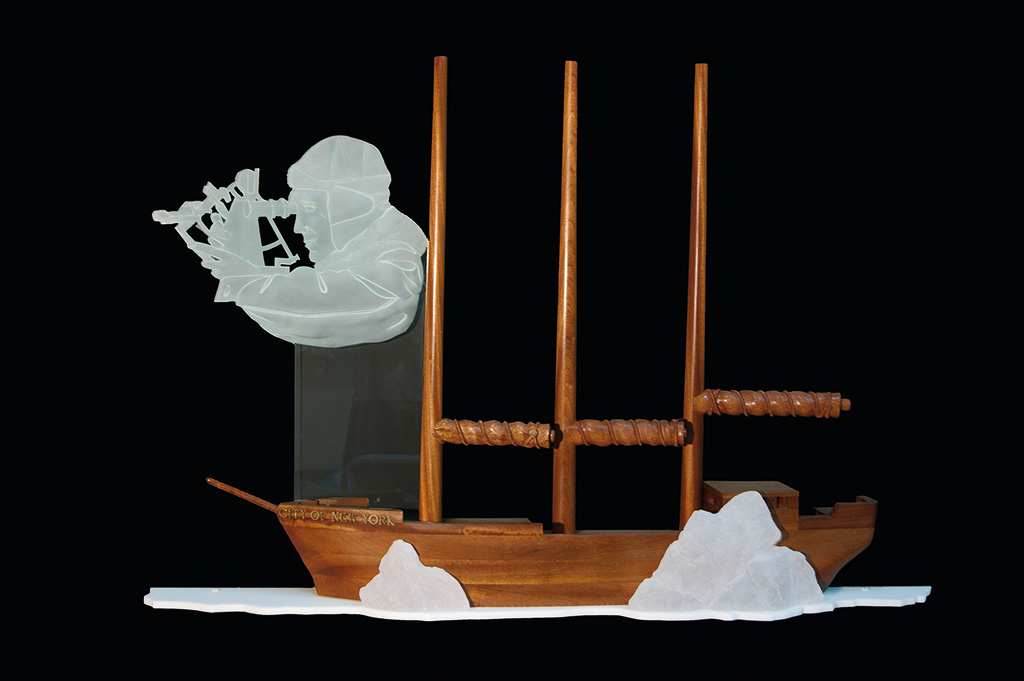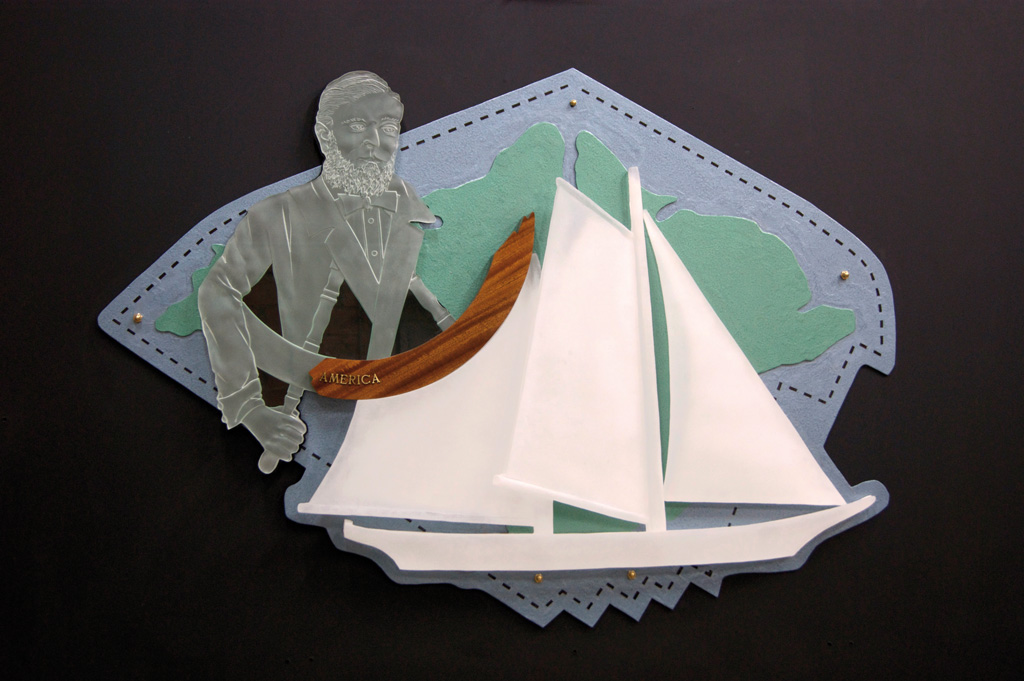Anthem of the Seas
Materials Wood (Sipo), sandblasted carved glass, kiln-formed glass, Corian (support) and cast bronze
Collection Royal Caribbean International, Miami, FL
These three sculptures were commissioned by Royal Caribbean International.
Fram/Amundsen
The Fram was built as a polar exploration schooner in Norway in 1892. It is said that the ship sailed further north first with the explorer Fridtjof Nansen and further south with Roald Amundsen than any other wooden ship. Amundsen used the ship for his expedition to the south pole from 1910 to 1912. On 14 December 1911 Amundsen reached the south pole with a team of 5 men and 16 dogs, thirty-three days ahead of the British explorer Robert Falcon Scott.
This schooner was constructed to be wider and shallower than most ships of its time in order to resist the inward pressure of the ice when frozen into the arctic or Antarctic seas. It has been preserved and can be seen today at the Fram Museum in Oslo, Norway.
City of New York/Byrd
The schooner, City of New York built in Norway in 1885 as a ship intended for hunting seals in arctic waters. More than forty years later it became the flagship of Admiral Richard Byrd’s 1928 expedition to the south pole. This voyage also included a smaller ship and three airplanes. It was during this expedition that Byrd flew over the south pole and thus claimed to be the first to reach the pole by air.
This ship was previously called the Sampson and was reputed to be in the vicinity of the Titanic when it was sinking. Ostensibly, it did not approach the Titanic because it was violating territorial waters while hunting seals. This story has been disputed by some historians who say that the ship was far from the location where the Titanic went down. Whether the story is true or not, it adds to the mystique of this now famous schooner.
Amercia/Richard Brown
In 1851 a challenge was issued by the Royal Yacht Squadron to the New York Yacht Club for a race clockwise around the Isle of Wight in England. The schooner America responded and raced against a fleet of British yachts both schooners and cutters. The race was called the 100 Guineas Cup and the Captain of the America Richard Brown brought his yacht home beating his British counterparts. Because of this convincing victory the race was renamed the America’s Cup when the race was rerun in 1857. It has subsequently become a match race and continues to this day.


